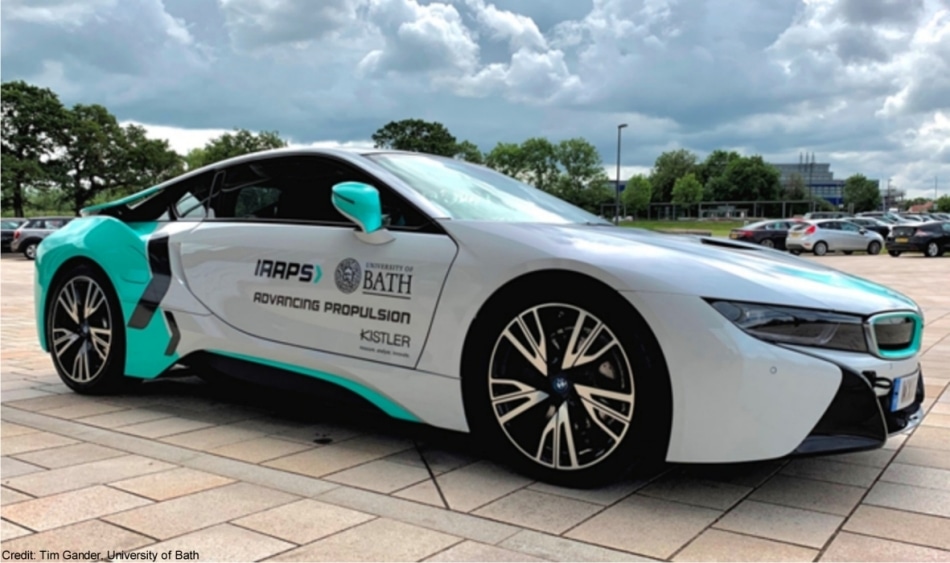The automotive industry is moving fast into an era where electric power is used as the primary power source with hydrocarbon fuels in a supporting role. The use of the “Plug-in Hybrid” concept presents challenges to powertrain designers that demand new technologies to define the parameters of the propulsion systems. Optimising vehicle emissions and fuel efficiency are the main goals without compromising performance and drivability. The University of Bath and Kistler have co-operated on a project to define how technology can be used to provide an objective and repeatable analysis.
 BMW i8 TEST VEHICLE
BMW i8 TEST VEHICLE
The challenge was to be able to characterize the whole vehicle powertrain performance, such that laboratory conditions and on-road conditions could be accurately matched in real-time. For this, accurate analysis of powertrain inputs, outputs and responses are required, including torque and energy flows for the whole system.
Extensive instrumentation was installed on the BMW i8 test vehicle which is being used by the University as part of a government funded project for defining future vehicle development processes, combining collaborative vehicle modelling with over-the-air, real-time data distribution. The instrumentation included a KiBox (for engine performance metrics and torque), Kistler wheel torque sensors (propulsion torque and braking forces) and instrumented drive-shafts (torque distribution and recuperation).
From the data recorded in real-time and then post-processed, the vehicle propulsion system could be analysed with some surprising observations. In particular, strategies for good tip-in response, involving mechanical energy storage within the powertrain mechanics (via shaft wind-up) could be identified.
Future cooperation between Kistler and the University is planned, and this advanced testing methodology will be increasingly important with the opening of the University’s new £70m Institute for Advanced Automotive Propulsion Systems (IAAPS) in 2021.
Source: http://www.kistler.com/